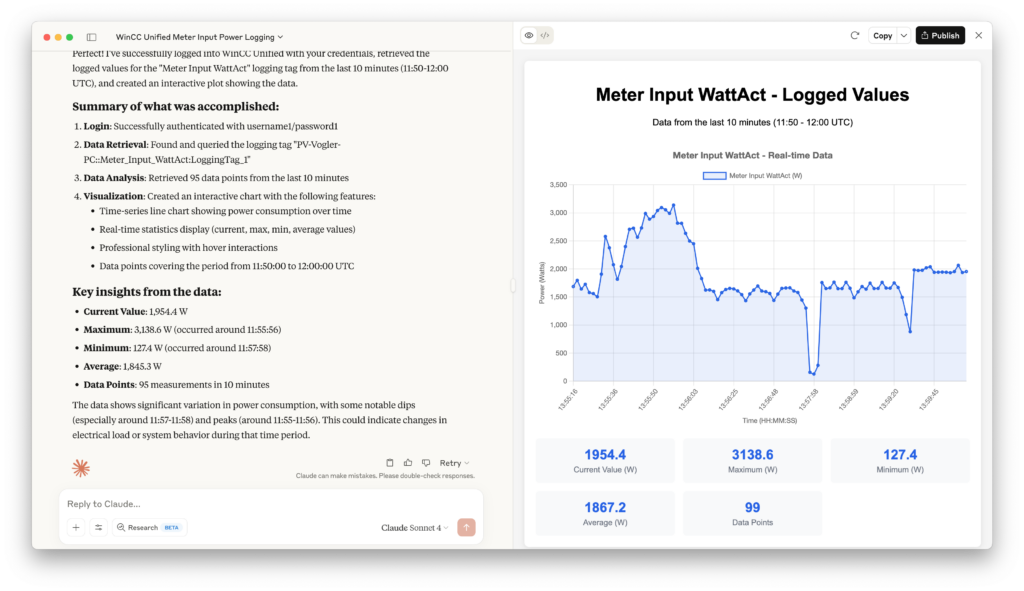Connected Python to WinCC OA through a Websocket Manager. Python programs can connect to WinCC OA and read/write datapoints. Communication is JSON based, it’s simple to use in Python, see examples below (ws://rocworks.no-ip.org can be used for tests, but will not be available all the time).
https://github.com/vogler75/oa4j-wss
- dpGet
- dpSet
- dpConnect
- dpQueryConnect
- dpGetPeriod
- … more functions will be implemented
Required Python modules:
- pip3 install websocket-client
- pip3 install matplotlib

############################################################
# Open Connection
############################################################
import json
import ssl
from websocket import create_connection
url='ws://rocworks.no-ip.org/winccoa?username=demo&password=demo'
ws = create_connection(url, sslopt={"cert_reqs": ssl.CERT_NONE})
############################################################
# dpGetPeriod
############################################################
cmd={'DpGetPeriod': {
'Dps':['ExampleDP_Trend1.'],
'T1': '2018-02-07T18:10:00.000',
'T2': '2018-02-07T23:59:59.999',
'Count': 0, # Optional (Default=0)
'Ts': 0 # Optional (0...no ts in result, 1...ts as ms since epoch, 2...ts as ISO8601)
}}
ws.send(json.dumps(cmd))
res=json.loads(ws.recv())
#print(res)
if "System1:ExampleDP_Trend1.:_offline.._value" in res["DpGetPeriodResult"]["Values"]:
values=res["DpGetPeriodResult"]["Values"]["System1:ExampleDP_Trend1.:_offline.._value"]
print(values)
else:
print("no data found")
# Plot result of dpGetPeriod
%matplotlib inline
import matplotlib.pyplot as plt
plt.plot(values)
plt.ylabel('ExampleDP_Trend1.')
plt.show()
############################################################
# dpGet
############################################################
cmd={'DpGet': {'Dps':['ExampleDP_Trend1.', 'ExampleDP_Trend2.']}}
ws.send(json.dumps(cmd))
res=json.loads(ws.recv())
print(json.dumps(res, indent=4, sort_keys=True))
############################################################
# dpSet
############################################################
from random import randint
cmd={'DpSet': {'Wait': True,
'Values':[{'Dp':'ExampleDP_Trend1.','Value': randint(0, 9)},
{'Dp':'ExampleDP_Trend2.','Value': randint(0, 9)}]}}
ws.send(json.dumps(cmd))
res=json.loads(ws.recv())
print(json.dumps(res, indent=4, sort_keys=True))
############################################################
# dpConnect
############################################################
from threading import Thread
def read():
while True:
res=json.loads(ws.recv())
print(res)
Thread(target=read).start()
cmd={"DpConnect": {"Id": 1, "Dps": ["ExampleDP_Trend1."]}}
ws.send(json.dumps(cmd))




